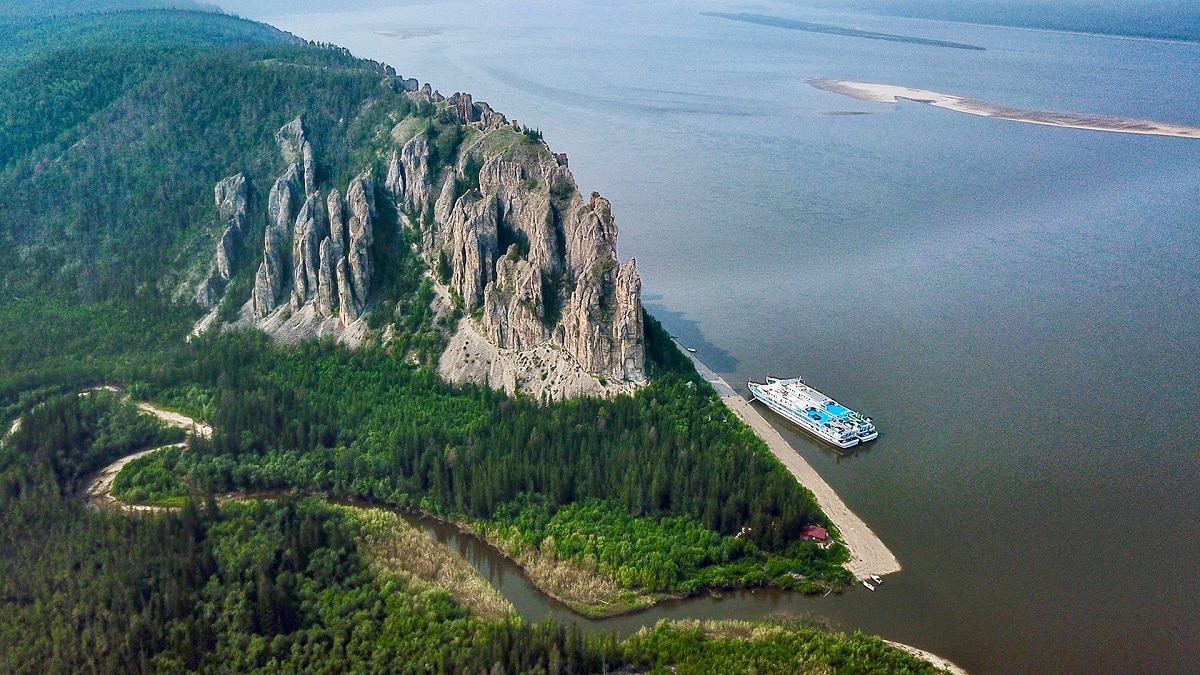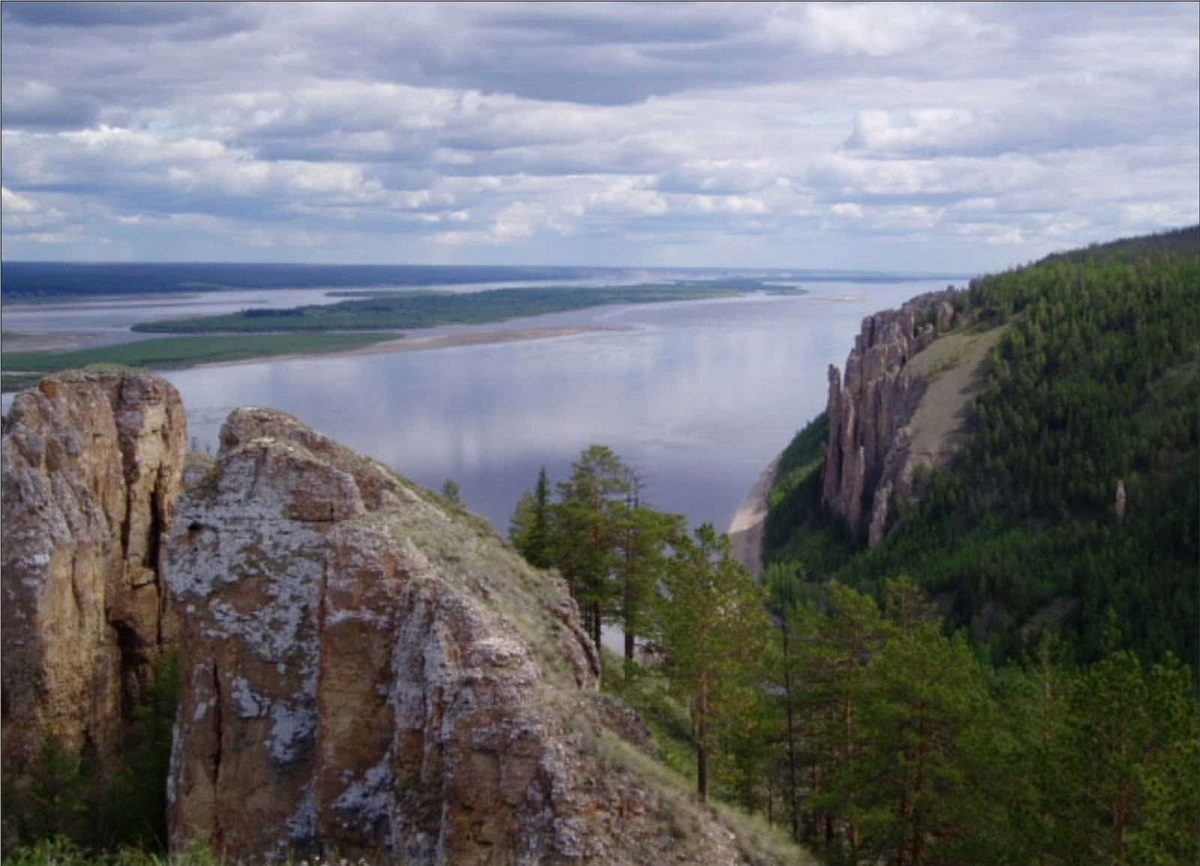
El lena river it is the longest in Russia and one of the longest in the world, with a total length of 4.400 kilometers. The source of the Lena is located in the Baikal Mountains, from where the river flows northeast to the Laptev Sea and the Arctic Ocean.
In this article we are going to tell you about the characteristics, tributaries, importance, flora and fauna of the Lena River.
Lena River Backdrop

It has a delta of significant proportions that it stretches more than 100 kilometers into the Laptev Sea and is almost 400 kilometers wide. Due to its size, the Lena River is very important for Russia, as it discharges a fifth of its territory. This represents more than two million square kilometers.
The Lena Delta freezes for about seven months a year. In May, the area transforms into wetland. Also, when spring comes, the rivers are prone to severe flooding.
It is one of the three main Siberian rivers (adjacent to the Ob and the Yenisei) that flow into the Arctic Ocean. Lena is the one furthest east. The role of the Lena River is crucial, especially for the people who live along the long river.
In areas where these waters flow through low-lying land, large crops of crops such as cucumbers, potatoes, wheat or barley are given. These products are mainly used for commercial activities.
Livestock or animal husbandry is also an activity in these areas. The land around the river is wide and conducive to grazing. Furthermore, these land areas have substantial wealth in terms of the presence of minerals, including gold and diamonds.
Other minerals such as iron and coal can also be found around the river, and are an important element of the Russian economy as they are a key part of steel production.
Currently, much of the Lena River remains navigable. This fact allows the transport of goods such as minerals, skins or food. This transport links the places of production with different areas of consumption, including the rest of the world. Only a small part of the Lena River is used for the development of the hydroelectric industry. Although its potential is much greater than what has been developed.
Key features

Due to its enormous extension, the character of the Lena is multiple and sometimes varies according to the area through which it runs. First, the temperature of the river is constantly changing. The terrain through which it runs plays a decisive role in the vegetation that emerges along its route.
For example, the central valley of the river has wide plains with grass. In the flooded areas, there are many swamps. Tree families such as birch and willow grow in these areas. Where the lower reaches of the river meet in the north, it features vegetation typical of tundra biomes. A lot of moss and lichen algae grow here.
As for the animals, birds from the Lena River region typically migrate to the area after winter. At that time, the objective of these animals was to reproduce, especially in moist soils, which were more fertile.
Swans, geese, sandpipers or plovers are birds that are usually found in hydrographic basins. While salmon, sturgeon and cisco are fish that can be found in the river. These fish are of commercial importance to Russia, but they are also ecologically important to the Lena River.
About 40 species live in the river. Highlighting the species of plankton, so far about 100 different types have been recorded.
Cities through which it passes

The Lena River originates in the Baikal Mountains in the southern part of the Central Siberian Plateau. Right now, the river is more than 1500 meters above sea level. The source of the water is only 7 km west of Lake Baikal.
The Lena River flows to the northeast, where other rivers (Kirenga, Vitim and Olyokma) flow into its bed. Passing through Yakutsk, the Lena flows north through low-lying areas, where it joins the Aldan River.
When Lena reaches the area where the Verkhoyansk ridge is located, she changes course to the northeast. There it joins the Willow River, which becomes the largest tributary of the Lena. On his way north, he reaches the Laptev Sea, a part of the Arctic Ocean.
In the last part of the Lena you can find a large delta that stretches more than 100 kilometers into the Laptev Sea. Also, it is about 400 kilometers wide. The Lena Estuary is nothing more than a frozen tundra that maintains these conditions for about seven months of the year.
A large part of the delta is protected as the Lena Delta Wildlife Sanctuary. A delta represents a territory formed in an area through which a river flows. In the case of Lena, it can be divided into a large number of flat islands. Among them, Chychas Aryta, Petrushka, Sagastyr or Samakh Ary Diyete stand out, although the list is much longer.
Lena river pollution
Due to its enormous extension, the Lena River can still be considered one of the cleanest sources of fresh water on Earth. The flow of these waters has experienced few major setbacks along its natural course., since the river channel is not obstructed by many structures, especially dams or reservoirs.
These characteristics make the Lena River a very different living environment than many other rivers in the world, and they are overexploited due to all their hydroelectric potential. However, as is common these days, the Lena is also threatened by human activity.
There are serious concerns about an oil spill that could contaminate Lena. This is due to the large number of ships that transport the precious crude oil along the river to the Arctic Ocean.
One of Russia's most effective tools is to designate many areas of the river as protected areas. However, the greatest threats that exist are overfishing, unequal grazing, deforestation in nearby areas to develop agriculture, and indiscriminate extraction of water for irrigation.
One of the latest concerns has to do with the forest fires that have affected large areas of the Arctic since June 2019. Some satellite images show fires around the Lena River. The carbon dioxide emitted will have a very negative impact on the environment.
I hope that with this information you can learn more about the Lena River and its characteristics.